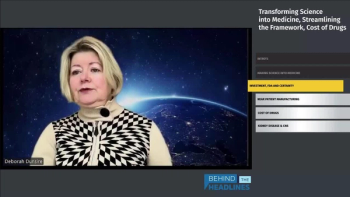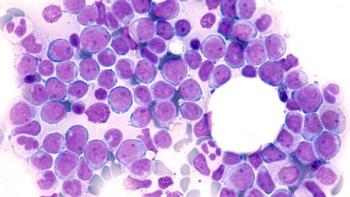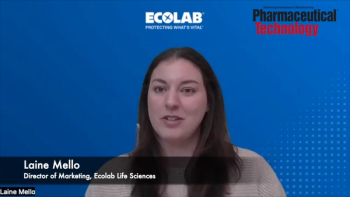
In Europe, the Use of Titanium Dioxide in Drugs Will Continue
Key Takeaways
- Titanium dioxide is crucial in 91,000 drug products for color and stability, despite safety concerns from the European Food Safety Authority.
- The European Medicines Agency found alternatives to TiO2 infeasible for most medicines without affecting quality, safety, and efficacy.
Based on an analysis done by the European Medicines Agency on the feasibility of alternatives, the European Commission maintains use of titanium dioxide in drug products.
On Aug. 4, 2025, the European Commission (EC) published a working document announcing its findings on the use of titanium dioxide (TiO2) in medicinal products (1). According to the EC document, TiO2 is used in 91,000 human drug products to add whiteness, accentuate color, ensure uniformed color, maintain color during shelf life, and preserve the API (1).
In 2021, after an assessment of potential safety concerns, the European Food Safety Authority determined TiO2 was not safe to use as an additive in food because genotoxicity could not be ruled out. To assess the potential concerns of using TiO2 in drug products, EC asked the European Medicines Agency (EMA) to provide scientific analysis of the reason for using it in drug products and the potential alternatives to its use.
In EMA’s conclusions, the agency stated TiO2 is used in several essential oral solid and semi-solid dosage forms, but alternatives should be able to be used; however, it was not yet confirmed if use of those alternatives would be feasible. EMA also stressed the impact on the supply chain if alternatives were used because of the number of products that would be impacted. Therefore, at the time, it was decided to continue its use while the EC reviewed the situation after an updated analysis was done by EMA.
Further analysis concludes alternatives not a viable option
The findings of EMA’s updated analysis were released in April 2024 concluded that while some alternatives to TiO2 performed well when evaluated under certain key performance indicators (KPIs), all were inferior when assessed against all KPIs. Therefore, EMA stated that the use of TiO2 was necessary for some medicines to ensure safety and efficacy, and it would only be feasible to remove TiO2 from 5% of authorized medicines.
“The investigations performed by the pharmaceutical industry thus far have confirmed the view reflected in the EMA response in 2021 that it is not considered technically feasible to replace TiO2 across the board in all medicines, without negatively impacting the quality, safety and efficacy of some, or all, of those medicines and thus their availability,” EMA stated in its findings (2). “With respect to new products currently under development, the same technical challenges are expected to apply. Given its widespread use and acceptability, TiO2 will have been the material of choice in coating materials, capsules, etc., and is likely to have been included very early in product development and in early formulation development and clinical studies. Therefore, its removal from medicines under development is expected to raise the same technical challenges as for authorized medicines.”
As a result of these findings, “the Commission takes the view that the use of titanium dioxide as a color in medicinal products, as provided for in Regulation (EU) 2022/63 amending Regulation (EC) No 1333/2008, should be maintained” (1).
Industry responds to decision
On Aug. 13, 2025, ACG, a supplier of capsules and allied solutions, commented on the EC’s decision (3). ACG worked to inform the pharmaceutical community on the challenges of TiO2 and cooperated with the IQ Consortium to create a database of the potential impact of a ban on TiO2 in drugs. The company also prepared for a ban by investing in the development of TiO2-free alternatives.
“This is a wise and pragmatic decision for the pharmaceutical sector,” Dr. Subhashis Chakraborty, general manager, Head–Global Product Management at ACG Capsules, said in an emailed statement. “We remain fully committed to supporting the nutraceutical industry in navigating the ongoing ban through innovative TiO₂-free capsule solutions.”
Pharmaceutical Technology® spoke with Bram Baert, global head of Regulatory Affairs at Lonza CHI, to get his perspective on the impact of the EC’s decision on the use of TiO2 in drug products.
References
- EC. Commission Staff Working Document on the Use of Titanium Dioxide in Medicinal Products. Health.ec.europa.eu. Aug. 4, 2025.
https://health.ec.europa.eu/document/download/34542b69-8507-4fc2-b106-bd15b481e40d_en?filename=mp_working-doc-titanium-dioxide_en.pdf - EMA. Feedback from European Medicine Agency (EMA) to the EU Commission Request to Evaluate the Feasibility of Alternatives to Replace Titanium Dioxide (TiO2) in Medicinal Products and its Possible Impact on Medicines’ Availability. Ema.europa.eu. April 1, 2024.
https://www.ema.europa.eu/en/documents/report/feedback-european-medicine-agency-ema-eu-commission-request-evaluate-feasibility-alternatives-replace-titanium-dioxide-tio2-medicinal-products-its-possible-impact-medicines-availability_en.pdf - ACG. ACG Welcomes European Commission’s Decision on Titanium Dioxide in Pharmaceuticals. Statement Emailed to Pharmaceutical Technology. Aug. 13, 2025.
Newsletter
Get the essential updates shaping the future of pharma manufacturing and compliance—subscribe today to Pharmaceutical Technology and never miss a breakthrough.




